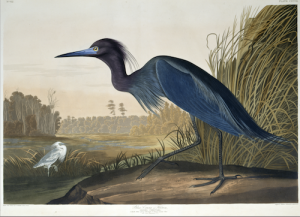
The Digital Library Collections Website (DLC) beta was released in late October. Until the DLC release, our digital projects were “siloed” within their own applications, limiting exploration to only one project or exhibition at a time. The DLC allows content from all of our projects and exhibitions to be explored and discovered in a single interface. The site includes content from most of our public special collections projects as well as from our online exhibitions, with the exception of book-like material. (Older and out-of-copyright book-like material will continue to be available from Hathi Trust.) The DLC includes scans of photographs, posters, objects, manuscripts, and other archival material from our special collections. The DLC will continue to grow as more of our special collections are digitized and cataloged.
While the official project kickoff was in December 2013, the systems and infrastructure work to pull together our digital collections into one discovery system have been being developed for several years. We’ve been able to leverage open source technologies and to build a sustainable and agile infrastructure. The DLC is built within our Fedora/Hydra/Blacklight technology platform, which is the same platform used for Academic Commons and several of our more recent digital library projects. In addition to making our content easier to discover, the use of a single technology platform will make it easier to improve and enhance access to our digital collections over time. When new features are added to the system, they can be made available to all relevant digital project content.
One of the benefits provided by the DLC is the ability to work with content within the website, which we have enabled by integrating the OpenSeaDragon image viewer into the application. This allows users to zoom into a photograph or another item to an incredible level of detail, e.g., into the city streets of a map, giving users a sense of the scripts used in manuscripts and marginalia, as well as a better understanding of the quality of the items. Other functionality that we have added or integrated into the application includes date range searches for items accommodating items with both certain and uncertain creation dates (i.e., a date range for the creation date rather than a specific year); front and back displays of two-sided scans and sequence-based displays of multi-image content; tiled and list views for results sets that allow the user to either see more metadata with the results or more results per screen; downloadable image derivatives of various sizes (thumbnail to large); a homepage project view that gives the user a sense of the breadth of the collections; and the ability to display the original MODS XML metadata for records. We are continuing to develop more functionality for the DLC, which will be further enhanced and focused as we receive feedback and conduct assessments. We have completed a staff survey and have conducted the first usability tests of the site.
It would be good to include a link to the website in a posting like this. For example, I would like to click over and see the DLC site based on your description but I have to look for it instead.
Great suggestion Joyce! Thanks!